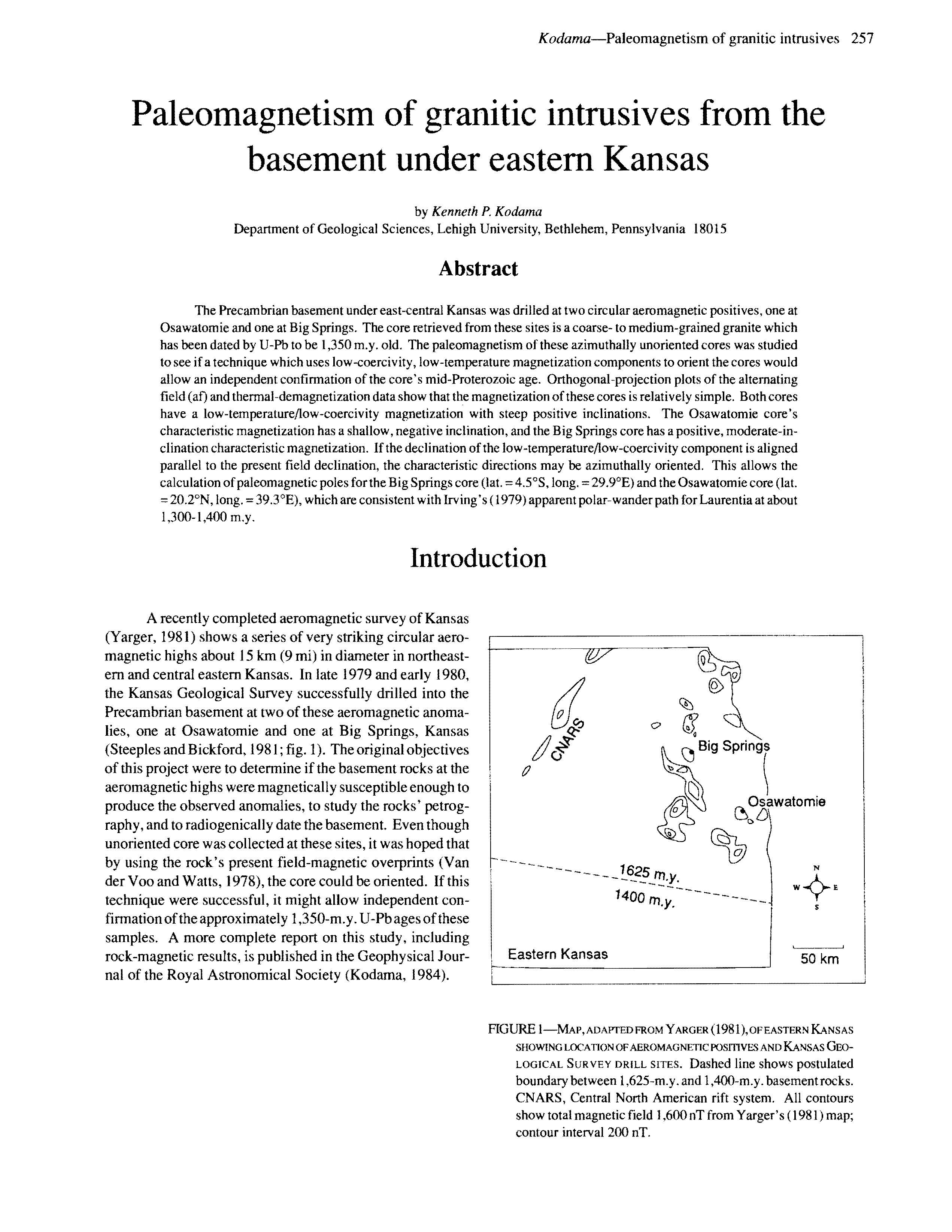Paleomagnetism of granitic intrusives from the basement under eastern Kansas
DOI:
https://doi.org/10.17161/kgsbulletin.no.226.20507Abstract
The Precambrian basement under east-central Kansas was drilled at two circular aeromagnetic positives, one at Osawatomie and one at Big Springs. The core retrieved from these sites is a coarse- to medium-grained granite which has been dated by U-Pb to be 1,350 m.y. old. The paleomagnetism of these azimuthally unoriented cores was studied to see if a technique which uses low-coercivity, low-temperature magnetization components to orient the cores would allow an independent confirmation of the core's mid-Proterozoic age. Orthogonal-projection plots of the alternating field (at) and thermal-demagnetization data show that the magnetization of these cores is relatively simple. Both cores have a low-temperature/low-coercivity magnetization with steep positive inclinations. The Osawatomie core's characteristic magnetization has a shallow, negative inclination, and the Big Springs core has a positive, moderate-inclination characteristic magnetization. If the declination of the low-temperature/low-coercivity component is aligned parallel to the present field declination, the characteristic directions may be azimuthally oriented. This allows the calculation of paleomagnetic poles for the Big Springs core (lat. = 4.5°S, long. = 29.9°E) and the Osawatomie core (lat. = 20.2°N, long. = 39.3 °E), which are consistent with Irving's (1979) apparent polar-wander path for Laurentia at about 1,300-1,400 m.y.
Downloads

